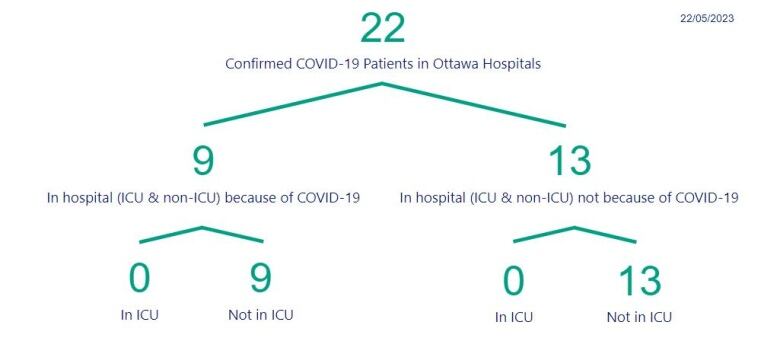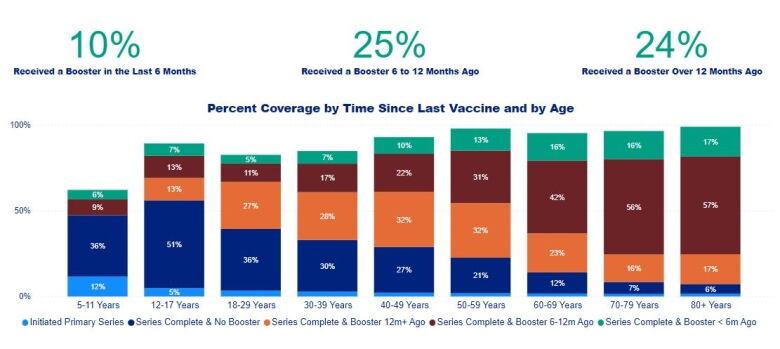Ottawa region COVID trends mostly low and stable as May ends
Number of Ottawans in local hospitals continues to drop

Recent developments:
- Ottawa's COVID-19 numbers are mostlylow and stable.
- Its average test positivity continues to rise.
- Nomore local COVID deaths have been reported since Friday's update.
The latest
Ottawa's pandemic trends are mostly lowandstable, according to Ottawa Public Health (OPH).
OPHhas not indicated any concerning trend since early this year, which is similar to the wider region outside of Ottawa.
Expertsrecommendpeople wear masks indoors. Staying up to date with COVIDvaccinescan alsohelp protect vulnerable people. Other guidance can vary between Ontario and Quebec.
Wastewater
Data from the research teamshows, as of the most recent update May26,the average coronavirus wastewater levelhas been low and stable for about twoweeks.
This averagegenerally stayed within the same range for a year, so this month has broken that trend.
It's currently at its lowest reading since February 2022.

Hospitals
The number of Ottawa residentsin local hospitals for COVID-19 has been slowly dropping. The numberdropped to sixin Tuesday's update, with no patients in ICU.
A separate count, which includespatientswho testedpositive for COVIDafter being admitted for other reasons, those admitted for lingering COVIDcomplications, and thosetransferred from other health units, remains stable.

Tests, outbreaks and deaths
The city's weekly average test positivity rate, which sitsaround 14per cent, has been rising for a week based on an average of about 105tests a day. It's currently seen by OPH as moderate.
Ottawahas a stable six active COVID outbreaks, which OPH considers low.
The health unit reported 61more COVID cases since Friday and zeroCOVIDdeaths, keepingits 2023 total to 76.
Vaccines
Ten per cent of Ottawans age five and older have had a COVID-19 vaccine dose within the last six months,with older age groups having higher vaccination rates. Thisdoes not factor inimmunity from getting COVID.
Ontario's vaccine recommendations changed in early Aprilto focus onhigher-risk people.

As of the most recent weekly update, 85per cent of Ottawa residents had at least one COVIDvaccine dose, 82per cent had at least two, 56per cent at least three and 31 per cent at least four.
Across the region
Spread
TheEastern Ontario Health Unit (EOHU)'sCOVID-19 risk levelis currentlylowalongside lowhospitalization rates, active cases and outbreaks, but its test positivity rate is moderate at about 18per cent.
Coronavirus wastewater averages areotherwise out of date or unavailable outside of Ottawa.
Hospitalizations and deaths
Eastern Ontario communities outsideOttawa report about 10COVID-19 hospitalizations, with two patients in intensive care.
That regional countdoesn'tincludeHastings Prince Edward (HPE) Public Health,whichshares a weekly average of itslocal hospitalization count: fourin its most recentweekly update, with twoin intensive care.
Western Quebec has 79hospital patients with COVID. One of them is in intensive care.
Vaccines
The Kingston area's health unit says 12per cent of its population age five and older have had a COVID vaccine in the last six months.
That number is 11per cent in HPE, and it remains unavailable elsewhere.














_(720p).jpg)


 OFFICIAL HD MUSIC VIDEO.jpg)
.jpg)



























































































